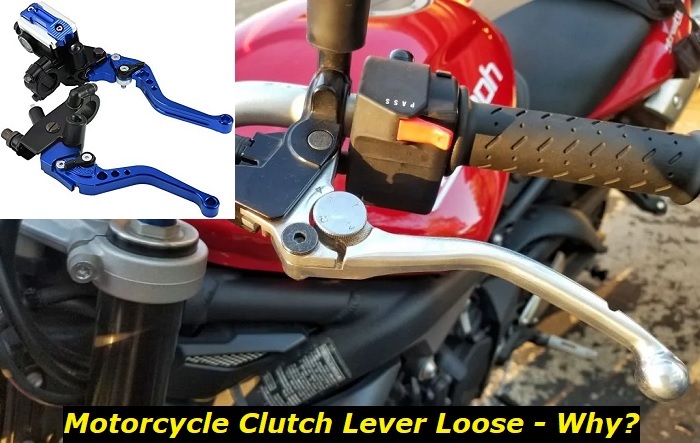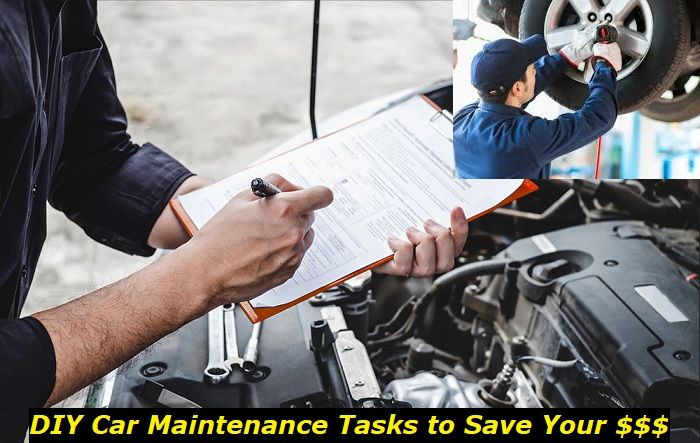If the tension of the clutch lever is too loose, it can become difficult to control the motorcycle. This mainly causes slippage and a loss of power during acceleration, among many other potential issues. There are two ways to adjust the clutch lever free play: using the adjuster on the side of the lever, or through the adjuster found under the bike.
In this article, we will show you how to adjust this component based on your preferred configuration or within your manufacturer's recommended setting. Likewise, we will also show you what may happen if this is not done correctly as a word of caution.

Importance of a Properly Working Clutch Lever
When the free play of the clutch lever is not properly tensioned, a variety of problems can arise.
- Inaccurate shifting can result in excessive wear and tear on the gearbox internals and transmission gears, leading to reduced performance or even the complete failure of the motorcycle's drivetrain.
- Additionally, if a worn-out cable or lever mechanism causes too little free play in the clutch lever, it could lead to an over-engaged clutch that slips or burnouts prematurely.
- On the other hand, if there is too much slack in the lever, it can cause difficulty when attempting to control acceleration and deceleration while riding.
- Furthermore, improper tensioning may prevent the full disengagement of the clutch during shifts, resulting in a jerky motion, stalling, and potentially dangerous situations when riding.
With these in mind, it is therefore essential to ensure that the clutch lever has the proper amount of free play at all times to keep your motorcycle running safely and smoothly.
What is the Best Measurement of the Free Play in the Clutch Lever
The ideal setting of the free play in the clutch lever is between 10 and 20 millimeters. This amount of space provides enough flexibility to allow for any movement between the clutch release mechanism and the actual transmission while allowing it to perform correctly at a full range of speeds without causing premature wear on either one.
Do note, however, that the numbers vary from one motorcycle to another. So, to get the recommended setting by your bike's manufacturer, be sure to refer to its service or owner's manual for more detailed information on this subject. You may also ask your trusted mechanic about the matter if you are still unsure how to proceed.
Quick Methods of Adjusting Clutch Lever Free Play to Its Ideal Configuration
As mentioned, the ideal measurement of the free play on the clutch lever should be within 10 mm to 20 mm. It may be subject to more adjustments though based on your bike manufacturer or mechanic's recommendation.
With that out of the way, here are two ways to adjust the calibration of a loose motorcycle clutch lever:
1. Adjust the Clutch Lever Free Play with the Adjuster on the Side
Start by pulling in and holding the clutch lever while using a ruler or some other measuring tool to determine its free play. If it's out of the range recommended by your bike's manufacturer or if you feel it is too loose, then you can use the barrel adjuster located on the side of the lever to make corrections.
You can find the adjuster right where the cable connects to the lever. Sometimes, it is hidden by a layer of plastic or rubber for protection, so you will just have to slide the covering back a bit to gain access to the part. In some cases, you may need to loosen the lever or its encasing by removing the bolt or screws at its base in order to get a more convenient way of manipulating the tension of the lever. Feel free to adjust accordingly from here.
To begin the calibration, loosen the locknut and turn the adjuster in small increments until you've reached a good tension and have achieved the measurement that you are most comfortable with or as recommended by your bike manufacturer.
You can adjust the barrel by simply using your hand, but if you need a good grip on the part, just use a pair of pliers or a small adjustable wrench to get the tension that you need.
2. Adjust the Clutch Lever Free Play with an Adjuster Underneath
Another way to tighten a loose clutch lever is via the barrel adjuster found under your ride. From the lever, follow the other end of the cable going down the bike. The location of the adjuster should be right at the tip.
The positioning of this component really depends on the design of your bike but it is usually found on the right side of your leg while riding it. In more ways than one, it may be hidden under a plastic encasing which may require a screwdriver, a hex key, or a wrench to get unbolted.
Again, simply access the locknut and turn it gradually until you get to the configuration that you are most comfortable with. Utilize a pair of pliers or a small adjustable wrench for this purpose if you need a good hold of the part while adjusting its tension.
Best Practices When Adjusting the Clutch Lever
When adjusting the clutch lever, it is crucial to keep in mind certain best practices so as to minimize any risk of damaging the motorcycle and its components.
Here are the important things that you should remember when determining the proper tension of your clutch lever:
- Always refer to the service or owner's manual of your bike for detailed information about the calibration of its clutch lever.
- Check and measure the free play with a ruler or some other measuring tool before making any adjustments.
- Use small increments when turning the adjuster so you don't overdo it and cause damage instead.
- Securely hold down both ends of a wrench while adjusting in order to evenly distribute force on either side.
- Always wear protective gear such as gloves, glasses, and boots when working with the motorcycle.
- If needed, loosen any bolts or screws that may be blocking access to the adjuster before making adjustments.
- Don't forget to readjust the locknut while keeping it tight enough so as not to cause any issues in the long run.
- Make sure that you don't overtighten the lever otherwise it could become too hard to pull or release during operation.
- Check for other possible problems after adjusting such as damage on the cables, frayed wires, etc.
- Take a trial ride on your bike afterwards just to make sure everything is running smoothly and safely under normal conditions before taking it out on public roads again.
Instances Where Adjusting the Clutch Lever May Not Work
For the most part, the methods shown here can fix the loose clutch lever that may potentially cause performance or safety issues in your motorcycle. However, there are also scenarios where this may not be the best course of action, and these include the following:
1. Faulty Clutch Lever Assembly
If the clutch lever is not operating as intended, then it may be necessary to replace the entire assembly instead of just adjusting its tension. This could be caused by wear and tear on certain parts or components due to age and usage.
2. Broken Wire Cables
Wires that have been exposed to extreme heat or cold conditions over time can easily snap which will make it impossible for them to move freely in order to adjust their tension. In this case, an expert should be consulted for proper replacement procedures for the cables.
3. Corroded Components
Parts that are heavily corroded due to moisture, dust, and other environmental factors should also be checked out and replaced if needed as they can interfere with the operation of the clutch lever.
4. Damages Due to Accidents
Mishaps or accidents can also cause damage to certain internal components of a motorcycle which may require a professional mechanic for replacement and troubleshooting.
5. Misaligned Parts
Components such as screws, nuts, bolts, or washers that have become misaligned due to extreme force applied can be difficult to adjust and should be realigned properly first before making any adjustments.
If the adjustment methods mentioned earlier don't work on your clutch lever, it is likely because one of its parts needs to be repaired or replaced in order to function properly again. Depending on the issue at hand, it may be necessary to consult a professional mechanic for further diagnosis.
The solutions for these may include a thorough cleaning, oil line checks, throttle cable replacements, clutch actuator inspection and adjustment, gearbox repair, transmission overhaul, or a full engine rebuild, among others. It is also important to ensure that the parts used are of good quality so as not to cause any future issues with your motorcycle.
Conclusion
Adjusting the tension of the clutch lever can oftentimes fix problems associated with its operation. However, there are certain instances when this method may not work and require more advanced techniques such as replacing faulty assemblies or realigning misaligned components.
Remember to always refer to the service or owner's manual of your bike or your mechanic for proper guidance on how to tackle these types of repairs and replacements for a good measure.
About the authors
The CarAraC research team is composed of seasoned auto mechanics and automotive industry professionals, including individuals with advanced degrees and certifications in their field. Our team members boast prestigious credentials, reflecting their extensive knowledge and skills. These qualifications include: IMI: Institute of the Motor Industry, ASE-Certified Master Automobile Technicians; Coventry University, Graduate of MA in Automotive Journalism; Politecnico di Torino, Italy, MS Automotive Engineering; Ss. Cyril and Methodius University in Skopje, Mechanical University in Skopje; TOC Automotive College; DHA Suffa University, Department of Mechanical Engineering






Add comment